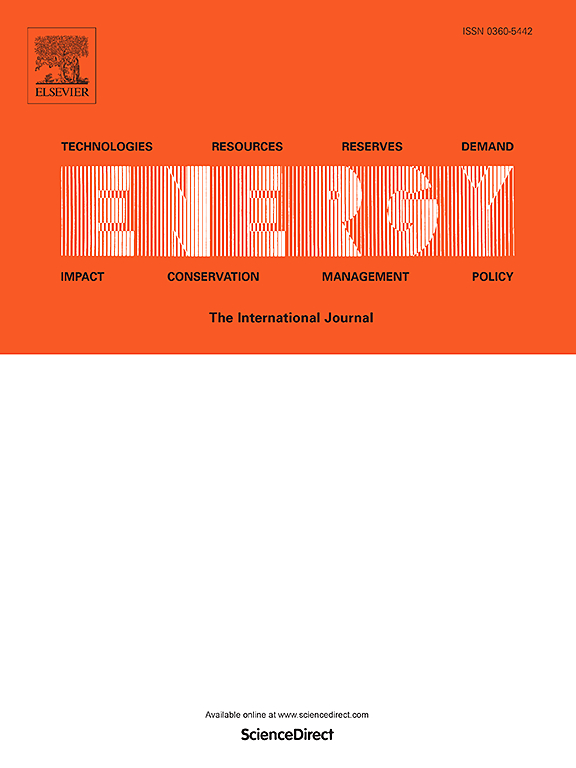Membrane absorption of separating supercritical carbon dioxide and vapor in geothermal energy utilization based on lattice Boltzmann modeling
IF 9
1区 工程技术
Q1 ENERGY & FUELS
引用次数: 0
Abstract
Supercritical carbon dioxide exhibits potential as a working fluid for electricity generation utilizing geothermal energy, even in the presence of vapor within the reservoir mixture. A membrane absorption separator has been designed to separate the vapor from the mixture and purify the carbon dioxide. To simulate the two-phase flow of the gas mixture and absorption liquid, the multicomponent multiphase lattice Boltzmann method is employed. This method is coupled with the interfacial continuous species transfer model for salt diffusion in liquid water to investigate pore-scale factors influencing vapor absorption. The modeling approach offers detailed insights into the membrane absorption process. Simulation results indicate that strategies to reduce mass transfer resistance, such as increasing porosity, enhancing hydrophobicity, and decreasing membrane thickness, significantly enhance absorption efficiency. Conversely, methods to increase the mass transfer driving force, including elevating the concentration of the absorbing solution, increasing its thickness, and decreasing the gas thickness, provide limited improvements in efficiency compared to the aforementioned strategies. Among the factors examined, membrane porosity emerges as the most significant.
基于晶格玻尔兹曼模型的地热能利用中分离超临界二氧化碳和蒸汽的膜吸收
超临界二氧化碳显示出作为利用地热能发电的工作流体的潜力,即使在储层混合物中存在蒸汽时也是如此。设计了一种膜吸收分离器,用于从混合物中分离蒸汽并净化二氧化碳。为了模拟气体混合物和吸收液的两相流动,采用了多组分多相晶格玻尔兹曼方法。该方法与盐在液态水中扩散的界面连续物质传递模型相结合,研究影响蒸汽吸收的孔隙尺度因素。建模方法提供了对膜吸收过程的详细见解。模拟结果表明,通过增加孔隙度、增强疏水性和减小膜厚来降低传质阻力,可以显著提高吸附效率。相反,与上述策略相比,增加传质驱动力的方法,包括提高吸收溶液的浓度、增加其厚度和减少气体厚度,对效率的提高有限。在研究的因素中,膜孔隙率是最重要的。
本文章由计算机程序翻译,如有差异,请以英文原文为准。
求助全文
约1分钟内获得全文
求助全文
来源期刊

Energy
工程技术-能源与燃料
CiteScore
15.30
自引率
14.40%
发文量
0
审稿时长
14.2 weeks
期刊介绍:
Energy is a multidisciplinary, international journal that publishes research and analysis in the field of energy engineering. Our aim is to become a leading peer-reviewed platform and a trusted source of information for energy-related topics.
The journal covers a range of areas including mechanical engineering, thermal sciences, and energy analysis. We are particularly interested in research on energy modelling, prediction, integrated energy systems, planning, and management.
Additionally, we welcome papers on energy conservation, efficiency, biomass and bioenergy, renewable energy, electricity supply and demand, energy storage, buildings, and economic and policy issues. These topics should align with our broader multidisciplinary focus.
 求助内容:
求助内容: 应助结果提醒方式:
应助结果提醒方式:


